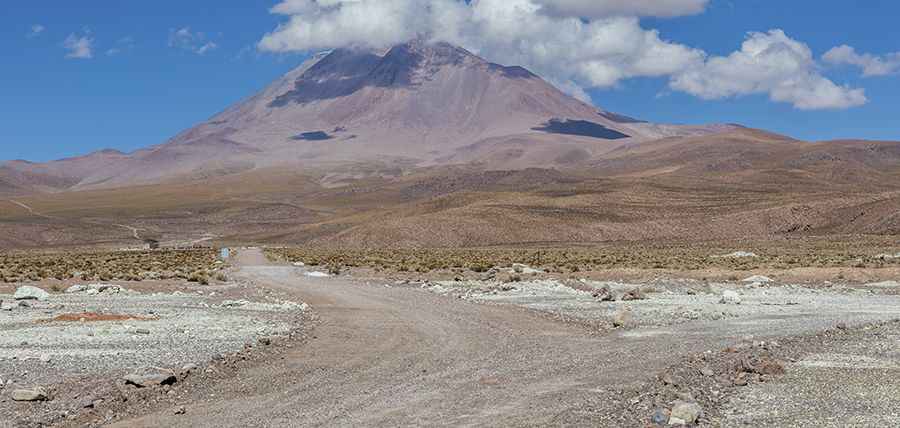An old mine road to the summit of Cerro Aucanquilcha
Cerro Aucanquilcha is a massive stratovolcano located in the Antofagasta Region of Chile. An old mine road used to run to the top, but now much of it about 5.500m (18,044ft) above sea level has been wiped out by landslides. For many years it was the highest drivable road in the world.

When was the road to Cerro Aucanquilcha built?
Set high in the northern part of the country, part of the Central Volcanic Zone of the Andes, the road to the summit is totally unpaved, but no longer usable by vehicles. Mining originally began on the volcano in 1913, initially using llamas as pack animals to carry down the sulfur. An aerial cable system extending for 22 km (14 mi) was completed in 1935, to lower the sulfur in buckets. Eventually this was replaced in 1972 by the road which switchbacked up to the summit and was capable of supporting 20-ton mining trucks. It was the world's highest mine during that period. It’s one of the highest roads of South America.
Can you drive to the summit of Cerro Aucanquilcha?
Located to the west of the border with Bolivia, within the Alto Loa National Reserve, it's one of the highest roads of Chile. This is an extremely tough road to try and climb up on a bike. The terrible surface and steep gradients meant that with loaded bikes you will have to push about 80% of the way from 4,000m to a high point at 5,130m. Although a number of people have taken their bikes to the summit, the surface on many stretches of the road is very bad or even blocked due to landslides. However, there are sections of rideable road all the way to the summit. At the summit itself it would also be possible to ride around a bit. Since the mine closed in 1993 much of the road has fallen into disrepair. Motorized use is no longer possible.
How is the climb to Cerro Aucanquilcha?
The existence of the old road makes it relatively easy to get to the summit on foot if you are well acclimatized and the old mining camp at 5,280m makes a good base camp as there are walls to shelter your tent. The winds in this area can be fierce and especially in winter the nights can be extremely cold. The highest permanent human habitation was a galvanized iron hut acting as a miners' barracks, with 4 workers, at about 5,500 m (18,000 ft).
Pic: Diego Delso [CC BY-SA 4.0 (https://creativecommons.org/licenses/by-sa/4.0)], via Wikimedia Commons